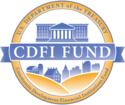Blog | What Actually Happens During a Card Breach?
When you get an email or letter saying there was a credit or debit card breach and your card has been compromised, what does that mean?
We understand that it is scary that someone out there might have your credit card info, but somehow your information leaked. In addition, no one wants to deal with the frustration of re-setting all your accounts with new card info. So, how did this happen?
Card Compromise or Card Breach are they basically the same? Yes
A data breach is an incident that exposes confidential or protected information. A data breach might involve the loss or theft of your Social Security number, bank account or credit card numbers, personal health information, passwords, or email. A data breach is an incident where information is stolen or taken from a system without the knowledge or authorization of the system’s owner.
Cardholder data compromise occurs when a merchant’s payment system is breached, and cardholder account information is stolen. Because your card is compromised, that does not necessarily mean your card has been used without your permission; just that it could be used.
How do I know if my card has been compromised?
When a card is compromised, your financial institution is provided a list from the card provider (Visa, MasterCard, etc.) with the debit and/or credit card numbers that were compromised. If the merchant that was compromised has made the breach or compromise information public, then that information is provided with the card numbers to the financial institution. If it is not made public, then the card provider can only send the card numbers to the financial institution.
At this time, your financial institution will notify you of the compromise and, if necessary, order you a new card to protect you from any unauthorized transactions.
Where was the info breached?
In many cases, the blame is placed on the financial institution for card information being leaked, but this is not true. The majority of the time, card breaches are caused by places you visit, like grocery stores and restaurants. And, most of the time, you will never find out where your info was leaked.
This is due to the fact that unless the breach or compromise is made public, we have no idea how this happened.
How can you keep your info safe?
Long story short, you can only do so much. Of course, you can always check card readers to ensure there are no additional card reading attachments, make sure you only use reputable companies when making purchases, and keep your info secret. However, even with these steps, a company can still be subject to scammers, hackers, and internal threats.
To be extra safe, you can always use a digital wallet option. Digital wallets encrypt your card info and assign your card a random number sequence adding a layer of protection when making purchases. Many digital wallet apps can also incorporate a special verification like a thumbprint or password before approving purchases using the app.
Resource One also offers MobiMoney. This app allows you to turn your card on and off when needed, among many more features.
Lastly, all Resource One Visa® debit and credit cards are automatically protected with Zero Fraud Liability coverage.






